SusDev Midterm Clicker Questions 1-60
0.0(0)
0.0(0)
Card Sorting
1/59
Earn XP
Description and Tags
Study Analytics
Name | Mastery | Learn | Test | Matching | Spaced |
|---|
No study sessions yet.
60 Terms
1
New cards
In the past 65 years, global population has increased by a factor of
about 3.0 (approximately tripled)
2
New cards
In the past 65 years, US population has
increased by a factor of about 2
3
New cards
To the nearest 1 billion people, what is the human population on Earth now?
8 billion
4
New cards
Approximately what was the 2004 UN medium projected peak population at the end of this century?
9 billion
5
New cards
How about the 2019 UN medium projected population in 2100
11 billion
6
New cards
When do you think was the last year when per capita energy consumption in the US was equal to the current global average of about 2500 Watts per person?
1776
7
New cards
Over the past century, global human energy consumption has increased by a factor of about
10
8
New cards
US oil production peaked in 1970. True or False?
False (Peaked sometime recently, around 2010-2020s I think)
9
New cards
Over the past 150 years, global per capita energy consumption has increased by a factor of
9
10
New cards
I think that average, global per capita energy consumption should
increase
11
New cards
What is an external cost?
impact of producing a commodity borne by "the public"
12
New cards
In acid rain, the pH is
lower than normal (higher = basic, lower = acidic)
13
New cards
Emissions from burning coal, smelting copper, etc, that cause acid rain include
Sulfur oxides + Nitrogen oxides
14
New cards
How was seafloor spreading discovered?
marine magnetic measurements
15
New cards
Where is the present day spreading center
C
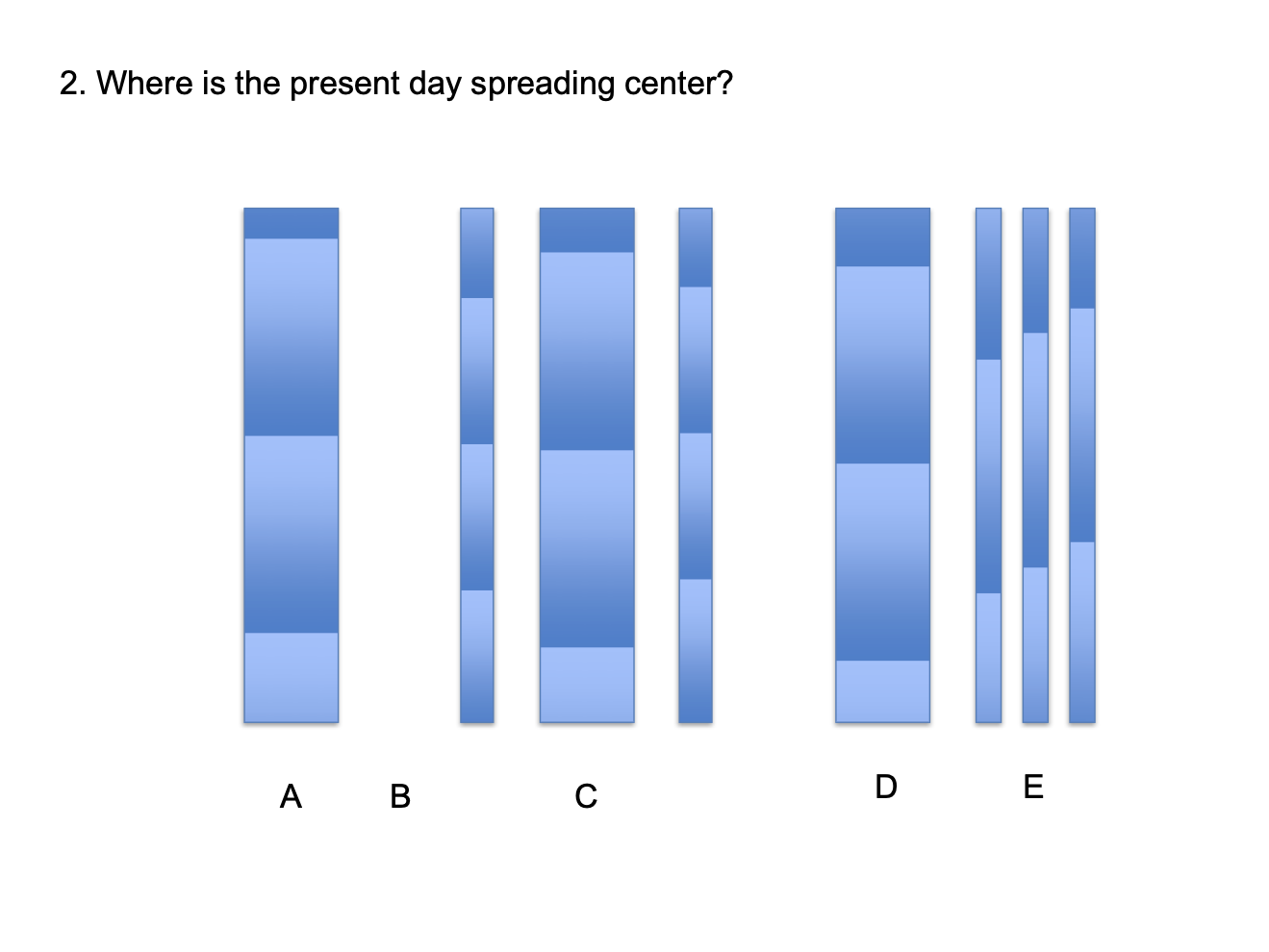
16
New cards
What has been the average spreading rate over the past 50 million years?
1 cm/yr
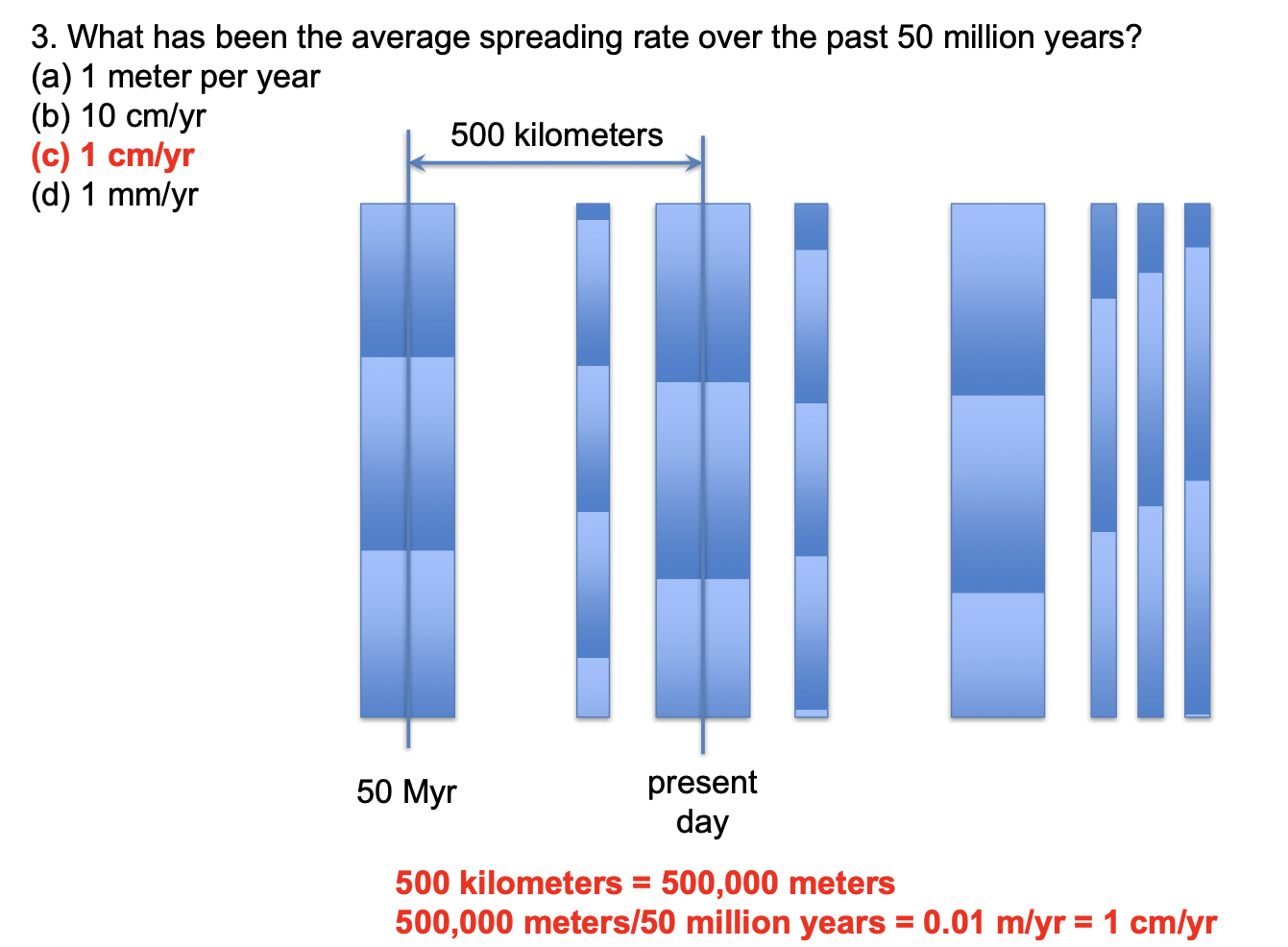
17
New cards
Subduction zones are also called
convergent plate boundaries
18
New cards
Mid-ocean ridges, aka spreading centers, are also called
divergent plate boundaries
19
New cards
True or False?
Continental crust is more dense than oceanic crust
Continental crust is more dense than oceanic crust
False
20
New cards
True or False?
Continental crust is more SiO2 rich than oceanic crust
Continental crust is more SiO2 rich than oceanic crust
True (idk kinda makes sense that crust has more oxygen stuff idk)
21
New cards
True or False?
Continental crust has higher Mg, Fe and Mg/(Mg + Fe) than oceanic crust
Continental crust has higher Mg, Fe and Mg/(Mg + Fe) than oceanic crust
False
22
New cards
True or False?
Continental crust is thicker than oceanic crust
Continental crust is thicker than oceanic crust
True
23
New cards
Continental crust is
up to 4 billion years old
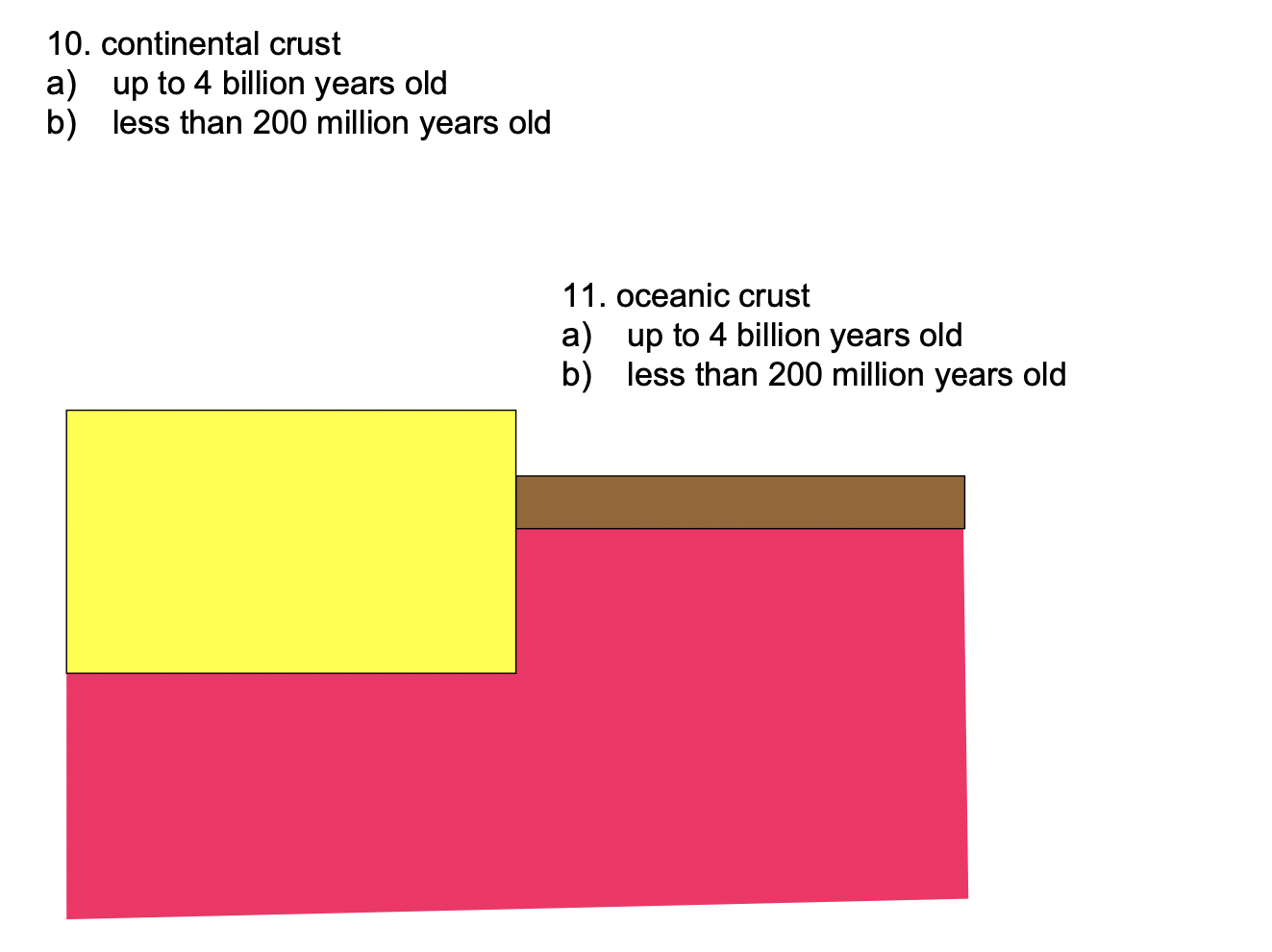
24
New cards
Oceanic crust is
less than 200 million years old
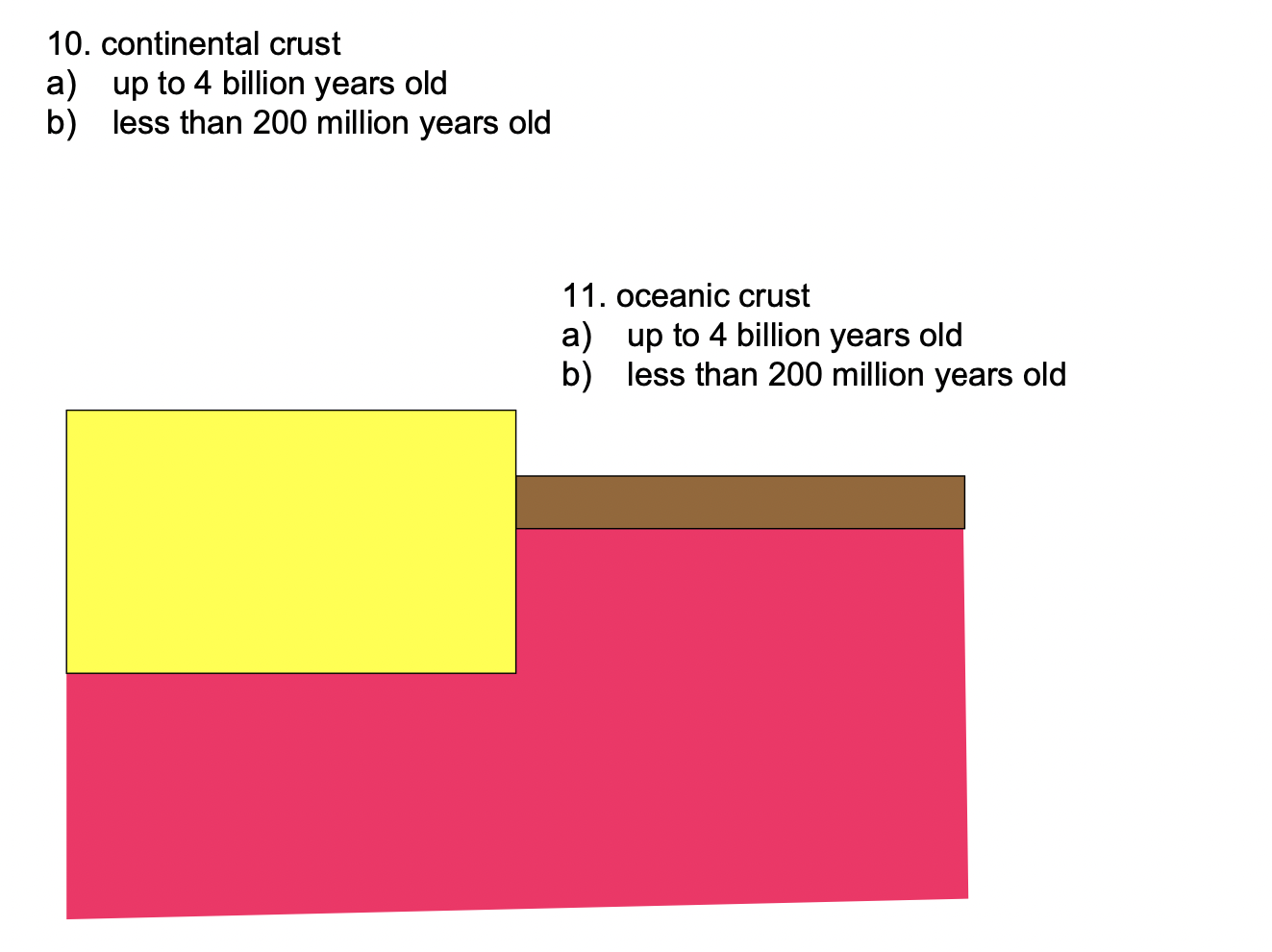
25
New cards
Continental crust is
felsic
26
New cards
Oceanic crust is
mafic
27
New cards
Compatible elements:
fit in crystals that form at high temperature during crystallization
major elements: Ni, Cr, Co
if sulfur is included, sulfide minerals contain some platinum group elements (PGE's), Cu
major elements: Ni, Cr, Co
if sulfur is included, sulfide minerals contain some platinum group elements (PGE's), Cu
28
New cards
Incompatible elements:
don't fit in crystals, instead stay in melt during early stages of crystallization
most other elements, including rare earth elements (REE's), Au, Ag
most other elements, including rare earth elements (REE's), Au, Ag
29
New cards
Where are compatible elements?
in mafic oceanic crust and mafic intrusions
30
New cards
Where are incompatible elements?
in felsic continental crust (Au + Ag are incompatible and u find those in caves in Minecraft)
31
New cards
highest T/P?
mid-ocean ridge (higher temperature, lower pressure)
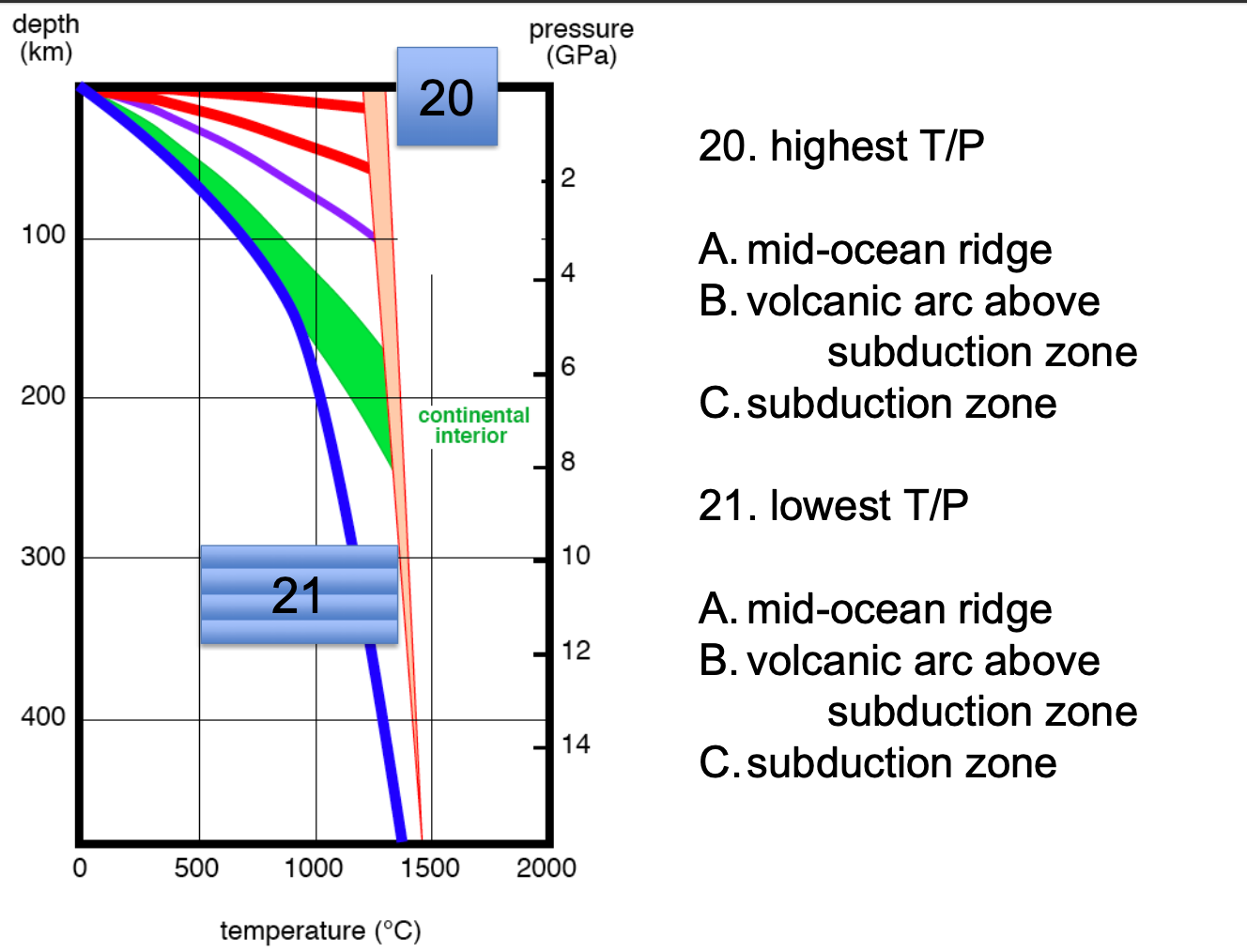
32
New cards
lowest T/P?
subduction zone (lower temperature, higher pressure)

33
New cards
Three main kinds of rocks
igneous, metamorphic, and sedimentary
34
New cards
What gases are major constituents of Earth's atmosphere, but minor on Venus and Mars?
Oxygen, nitrogen
35
New cards
Why does the Earth's atmosphere have so much more O2 than on Venus and Mars?
Photosynthesis
36
New cards
A reserve is
the amount of a commodity economically and legally extractable today
37
New cards
The Earth's early atmosphere, like volcanic gases today, probably did not contain abundant
O2 (Oxygen)
38
New cards
The most abundant gas in the Martian and Venutian atmospheres (> 90%) is
CO2
39
New cards
After the most abundant gas in the Earth's atmosphere, which is N2, the second most abundant gas (> 20%) is
O2
40
New cards
What factors, other than the amount and concentration of some commodity in the deposit, help to determine the size of reserves?
Price
Changing cost to produce due to added internal costs (pollution controls) and improved extraction technology
Regulations, tariffs, policy changes
Changing cost to produce due to added internal costs (pollution controls) and improved extraction technology
Regulations, tariffs, policy changes
41
New cards
In the context of the terminology for "reserve" versus "resource," a resource is
the total amount of ultimately extractable commodity
42
New cards
Three types of sedimentary rocks are
clastic, biogenic, evaporite (also abiotic chemical, phosphorous, iron)
43
New cards
You are an oil exploration geologist. Where should we look?
thick, undeformed, shallow water sediments along passive continental margins and in former shallow ocean basins on land
44
New cards
What is the SI unit for J/s?
Watts
45
New cards
How many seconds in a year
3.15 x 10^7 (60 sec x 60 min x 24 hrs x 365.25 days, looks like pi x 10^7)
46
New cards
Compared to CH4 (methane) and other hydrocarbons, CO2 is
Oxidized
47
New cards
Coal is mainly formed by thermal maturation at depth of
reduced plant material
48
New cards
Oil is mainly formed by thermal maturation at the depth of
reduced microbial material
49
New cards
C + O2 =
CO2 + energy
50
New cards
CH4 + (???)O2 = (???)CO2 + (???)H2O
2, 1, 2 (CH4 + 2O2 = 1CO2 + 2H2O
51
New cards
Oxidation of carbon and hydrocarbons are
Spontaneous, releasing energy in the form of heat (Remember C + O2 = CO2 + energy)
52
New cards
Combustion
Oxidation, spontaneous, release energy in the form of heat
53
New cards
Reduction of CO2 to make hydrocarbons
Not spontaneous, requires input of energy (e.g., solar energy, photosynthesis)
54
New cards
Oil is found
In shallow marine sediments that have been buried at 1 to 4 km depth
55
New cards
The amount of oil hat can ever be recovered on Earth is
the size of a resource
56
New cards
Correctly match the letters to the product associated with each zone
A -biogenic gas, B - oil, C - thermogenic gas
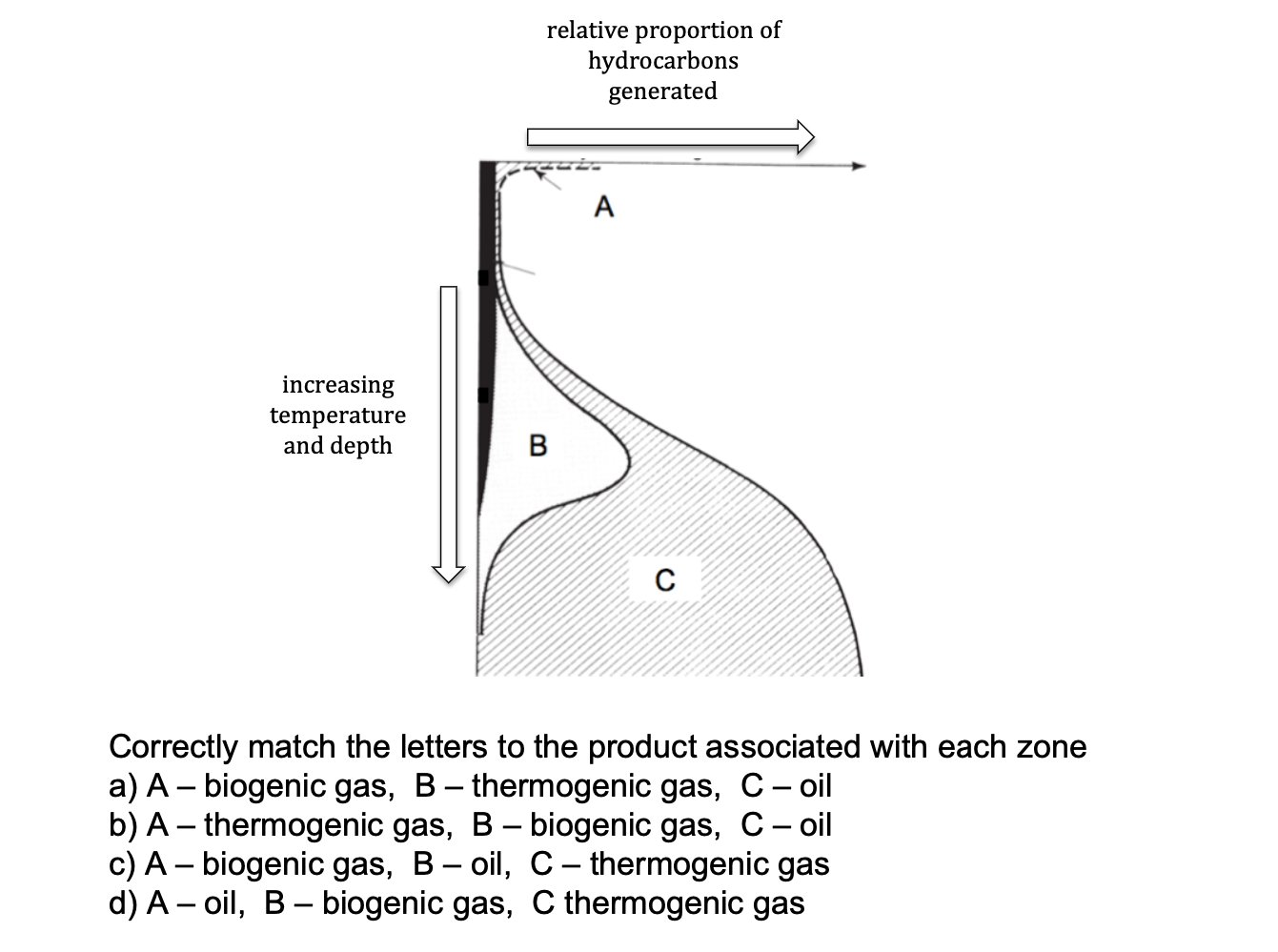
57
New cards
What is the typical temperature and depth interval for oil maturation?
50 to 170 degrees C, 1.5 km to 3.5 km
58
New cards
Mars and Venus have atmospheres with more than 95% CO2, as did early Earth, whereas at present Earth's atmosphere contains only 400 ppm CO2 (0.04%). Where is most of the missing carbon?
In sedimentary rocks
59
New cards
Are carbonates e.g., calcite CaCO3, dolomite CaMg(CO3)2, and magnesite MgCO3, useful energy resources?
NO
60
New cards
Which is a better fuel, coal with a molar carbon/oxygen ratio of 1, or coal with a molar carbon/oxygen ratio of 10?
10